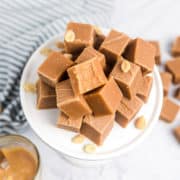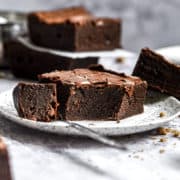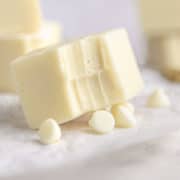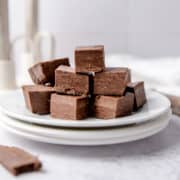Parsley is one of the most popular fresh herbs there is and can be used as an ingredient or garnish. Whether you grow your own fresh parsley or buy it from the grocery store or farmers' market, knowing how to store parsley means you can extend its shelf life and enjoy it for longer.

Jump to:
This herb has a distinctive flavor and it's great in everything from fish and seafood dishes to dip recipes, a garnish for savory dishes like omelets and egg puffs, or you can even substitute it for the basil in homemade pesto.
I nearly always have some fresh parsley on hand since it goes so well in all kinds of soups, salads, and sandwiches, adding a fresh flavor as well as an appealing pop of color.
What is Parsley?
Parsley (Petroselinum Crispum) is a flowering plant in the same family as carrots. There are different kinds, the most common of which are Italian flat leaf and French curly leaf.
Native to Morocco, the Mediterranean region including Greece, and also the former Yugoslavia, this herb has a bright green color and a mild taste.
Parsley has been cultivated and eaten for at least 2,000 years. It grows best in cool climates with a daytime temperature between 60°F and 70°F. It can also be grown indoors on a sunny windowsill during the colder months.
Containing Vitamins A, C, and K, along with potassium and folate, parsley offers way more than simply being a popular garnish. The herbaceous, clean flavor can be added to salad greens to add another dimension of flavor and it's also great sprinkled over buttery hot potatoes.
The parsley root is also edible and can be used in any dish calling for root vegetables. It looks a bit like parsnip and works in mashes, roasts, and stews.
How to Choose Fresh Parsley
You can tell a lot about how fresh parsley is just by looking at it. Select a healthy bunch with bright green leaves. Curly parsley will have frilled leaves while flat-leaf parsley has webbed flat leaves. Avoid parsley with slimy leaves or a bad smell. Parsley that's started to wilt is also on its way out.
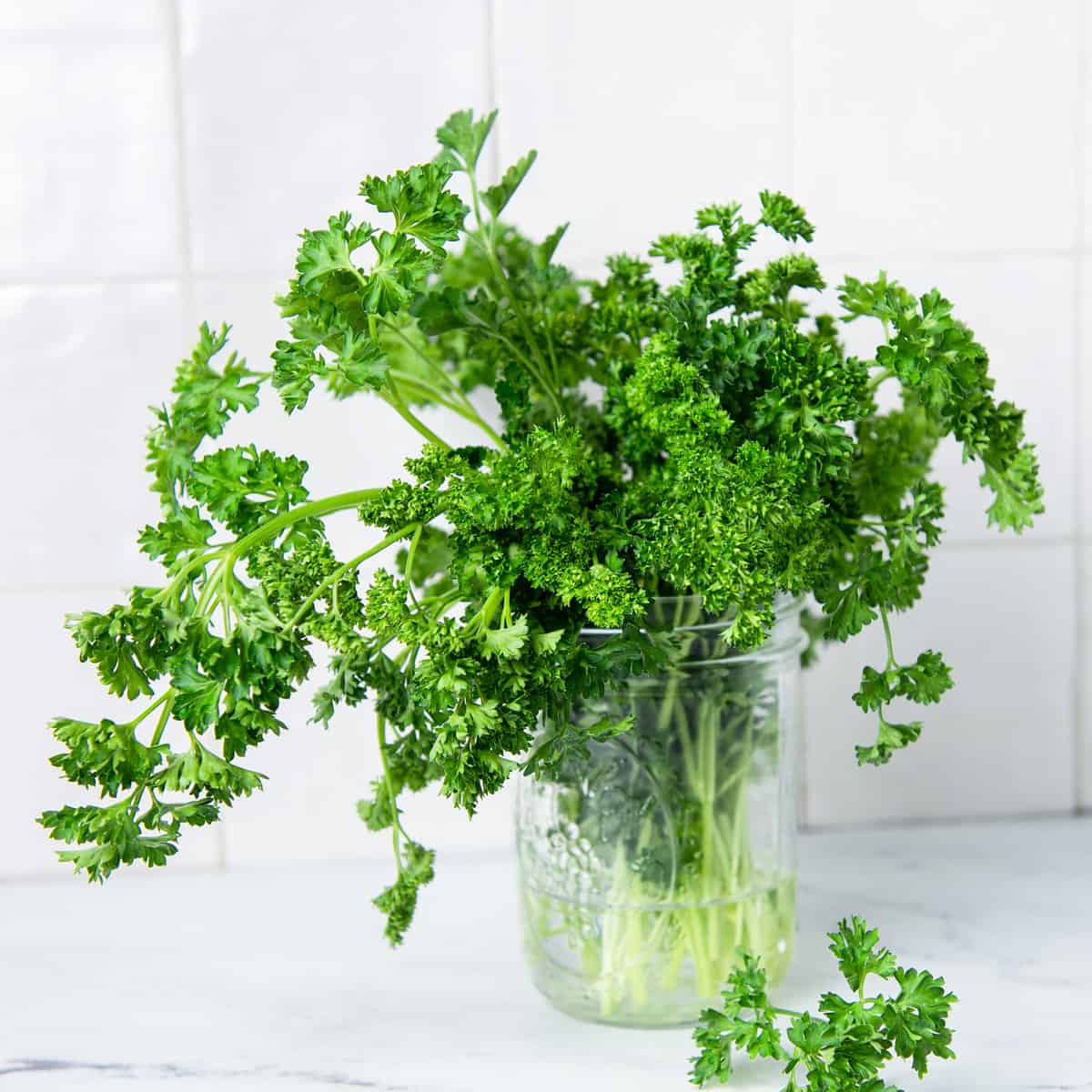
How to Store Parsley
Knowing how to store parsley means you can add some to recipes for a pop of color and a rich, herbaceous flavor. There are different methods to choose from if you want to store this popular herb and have some to hand to add to all your favorite recipes.
- Trim the bottoms of the stalks and keep the bunch in a glass of cool water at room temperature or in the refrigerator and use it within a week. Change the water every few days and put a resealable bag or Ziploc bag loosely over the top.
- Another option is to wrap the bunch of parsley in damp paper towels and refrigerate it for up to a couple of weeks. This is the best method if you have a lot of parsley since it will keep fresh for longer than on the kitchen counter.
- If you buy a parsley plant, keep it on the windowsill out of direct sunlight and water it whenever the soil feels dry. Parsley is one of the easiest herbs to grow in a herb garden or pot on the windowsill.
- If you have a lot of parsley, you might want to dry some. Rinse it and let it dry overnight on a towel. Put the parsley between 2 paper towels on a plate in a single layer or as close as you can get, and then microwave for 1 minute. Give it 10 seconds more if it's not dried, and repeat until it is. You can then crumble the dried leaves and store them in a mason jar or airtight container in the pantry or a cool, dry place.
- Freezing parsley is another option. Either put the bunch in a plastic bag and then another plastic bag or freezer bag or add it to water or olive oil in ice cube trays. Both of these methods work well and the parsley will keep for a long time, at least a few months.
How to Tell if Parsley Has Gone Bad
Store-bought herbs aren't always fresh, so it's important to know how to identify rotten parsley. Spoiled parsley might have a bad odor or be slimy. The leaves might be turning yellow from too much light or brown from too much oxygen. If your parsley has any of these characteristics, it's best to choose a different bunch.
Common Questions
Although they are both parsley, there is a difference in taste and texture between these two varieties. French curly parsley is a delicate herb that's mild in taste with a slightly grassy flavor. Italian flat-leaf parsley offers a bolder, more herbaceous, and aromatic taste. Flat leaf parsley is better for use in hot dishes because it retains more of the texture and flavor, although it's still best added just before serving since heat can destroy the delicate flavor. Curly parsley is especially good in chilled recipes like tabbouleh and fresh salads. If you’re in a pinch, you can always substitute one for the other though.
Parsley stems are perfectly edible but they can have a tough texture and slightly bitter taste, which is why a lot of home cooks just pick the parsley leaves off and use those. The stems of French or Italian parsley can be blended into homemade pesto or chopped on a cutting board to add crunch to your next salad. The flavor of the herbs is as rich in the stems as in the leaves, but if you don't like the woody texture or slightly bitter flavor, you might prefer to discard the stems and use the leaves only.
Whether you're rinsing parsley because you just picked it from the garden or you just want to ensure it's clean, you'll want to dry it before use. One great way to dry parsley after rinsing is to use a salad spinner. You can also let it sit on dry paper towels to soak up excess moisture. If you aren't using the parsley right away, excess water can speed up spoilage so it's worth ensuring it's completely dry before storing it.
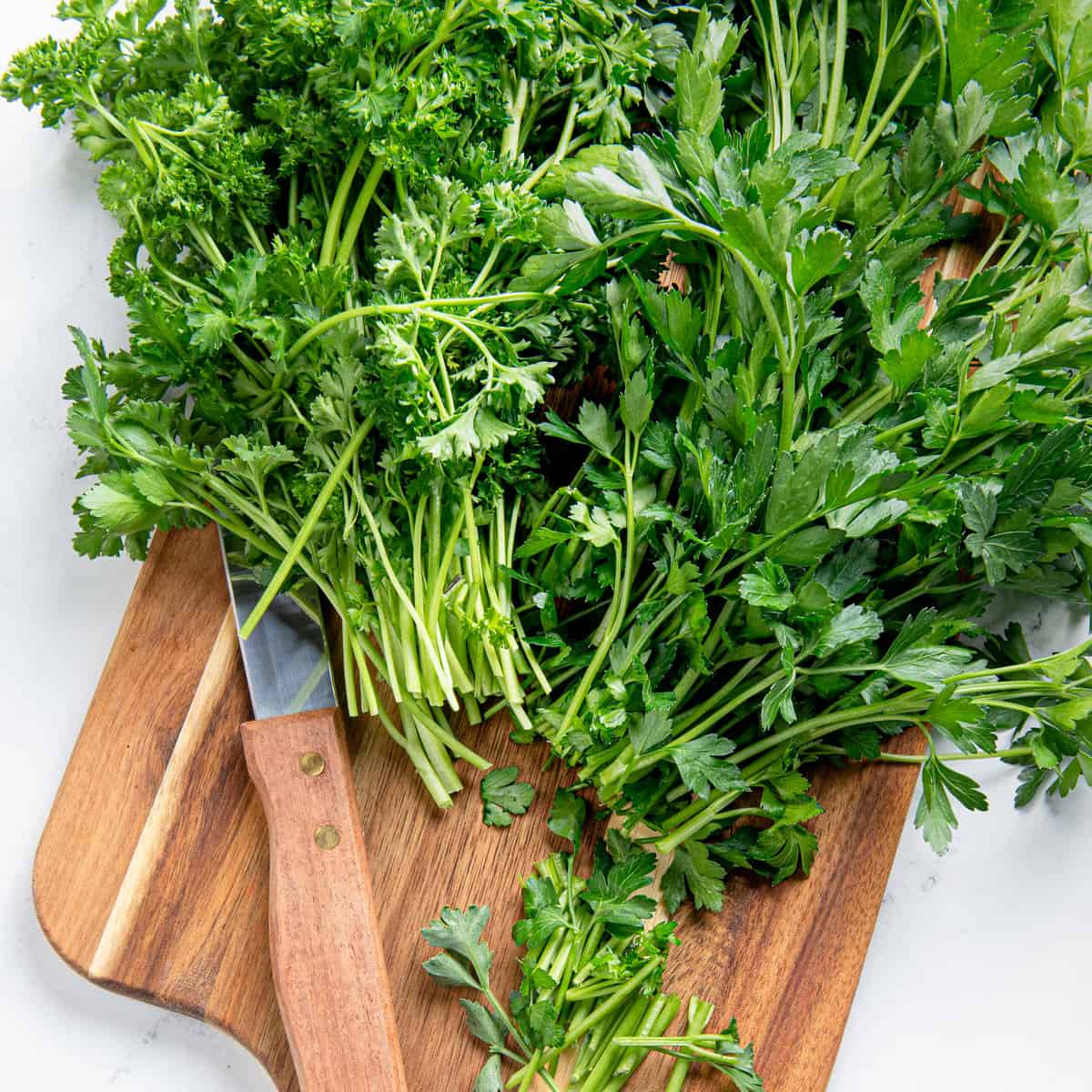
Fun Facts
- Parsley is one of the most popular herbs on the planet and is used in many cuisines including European, American, and Middle Eastern.
- This herb is a natural breath freshener and chewing it after a meal can refresh your mouth and disguise the odor of garlic if you've eaten some.
- Canada grows more parsley than any other country.
Once you know how to store parsley in different ways, you can choose whichever storage method you prefer next time you buy it, and then enjoy your fresh parsley in all kinds of dishes including food processor chimichurri, homemade pesto, buttery potatoes, soups, stews, and much more.





